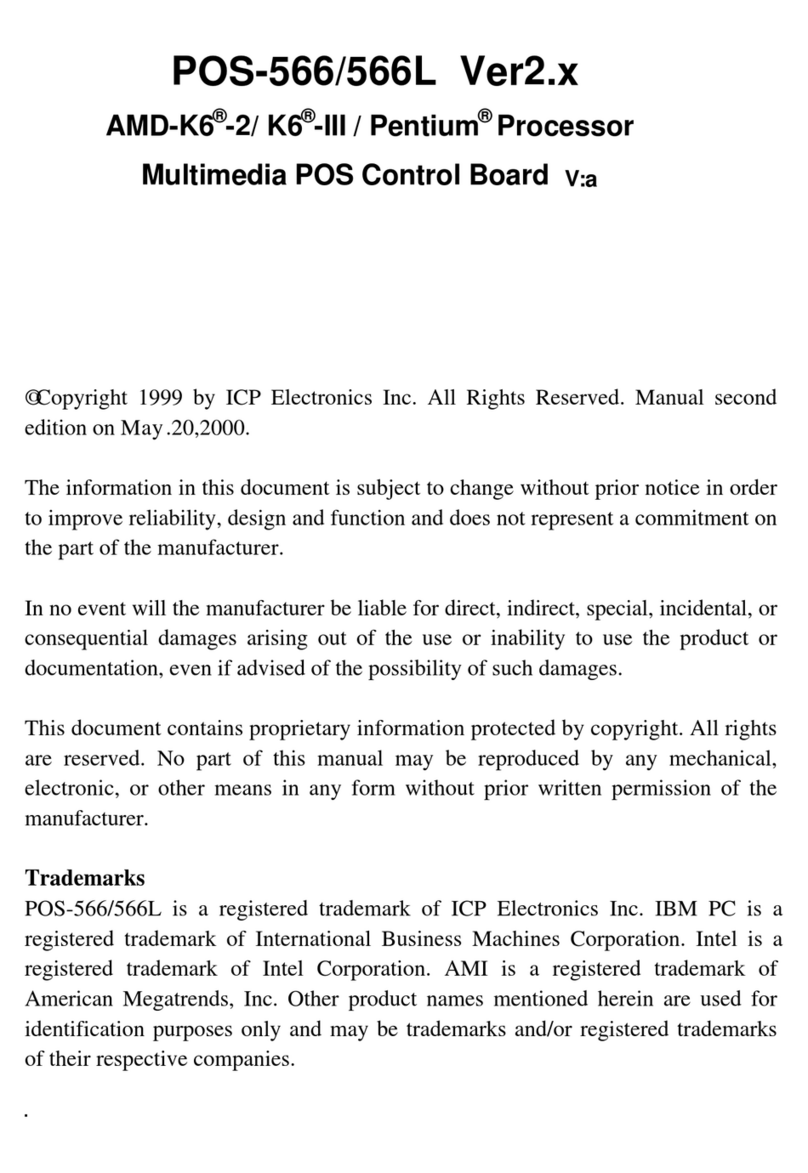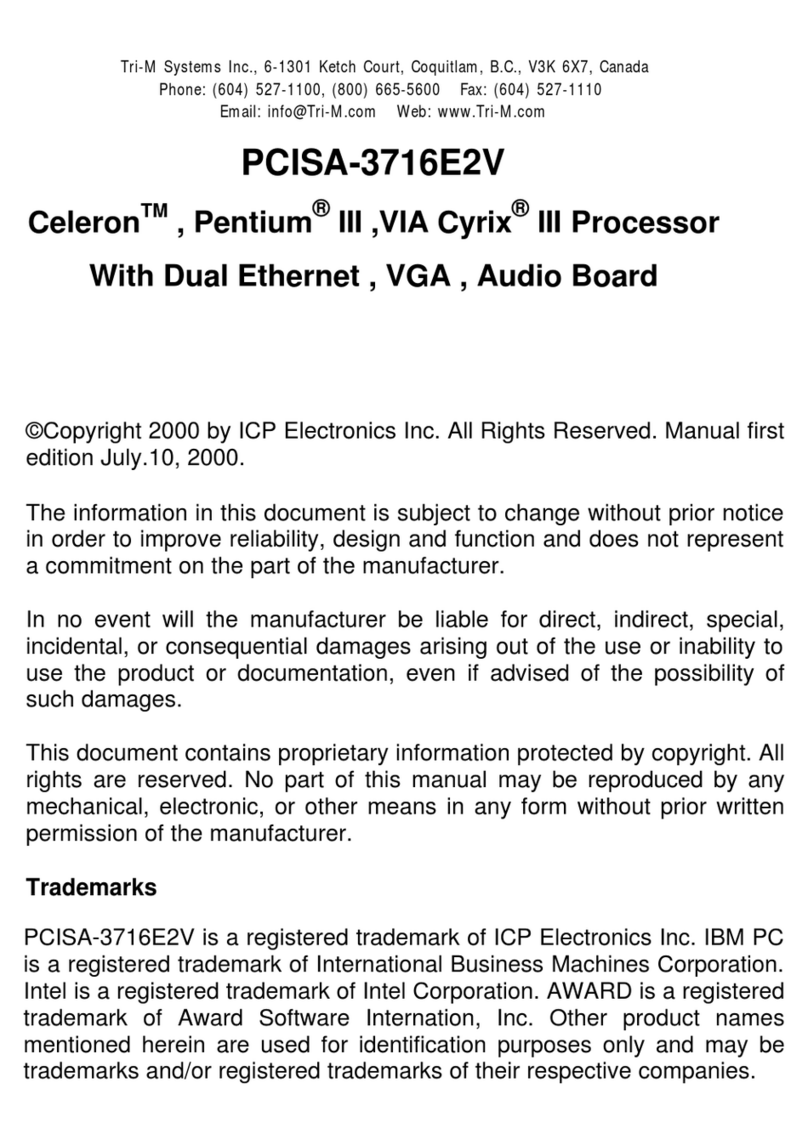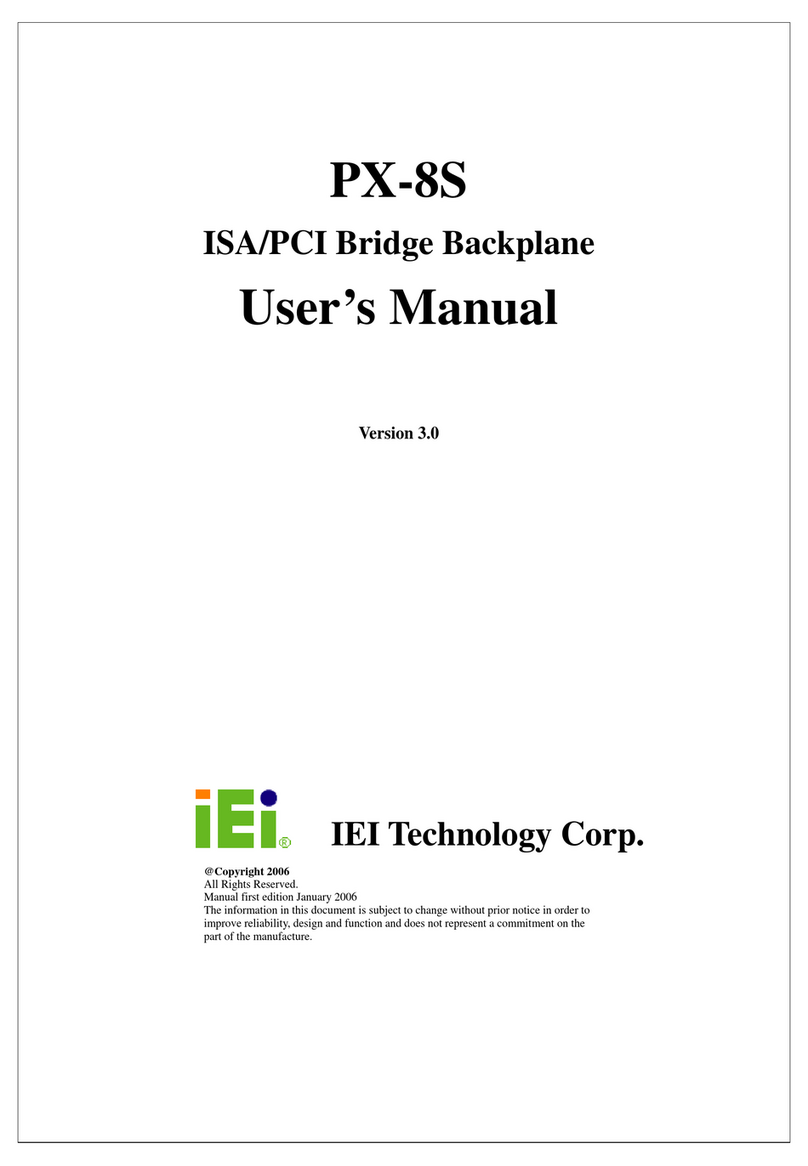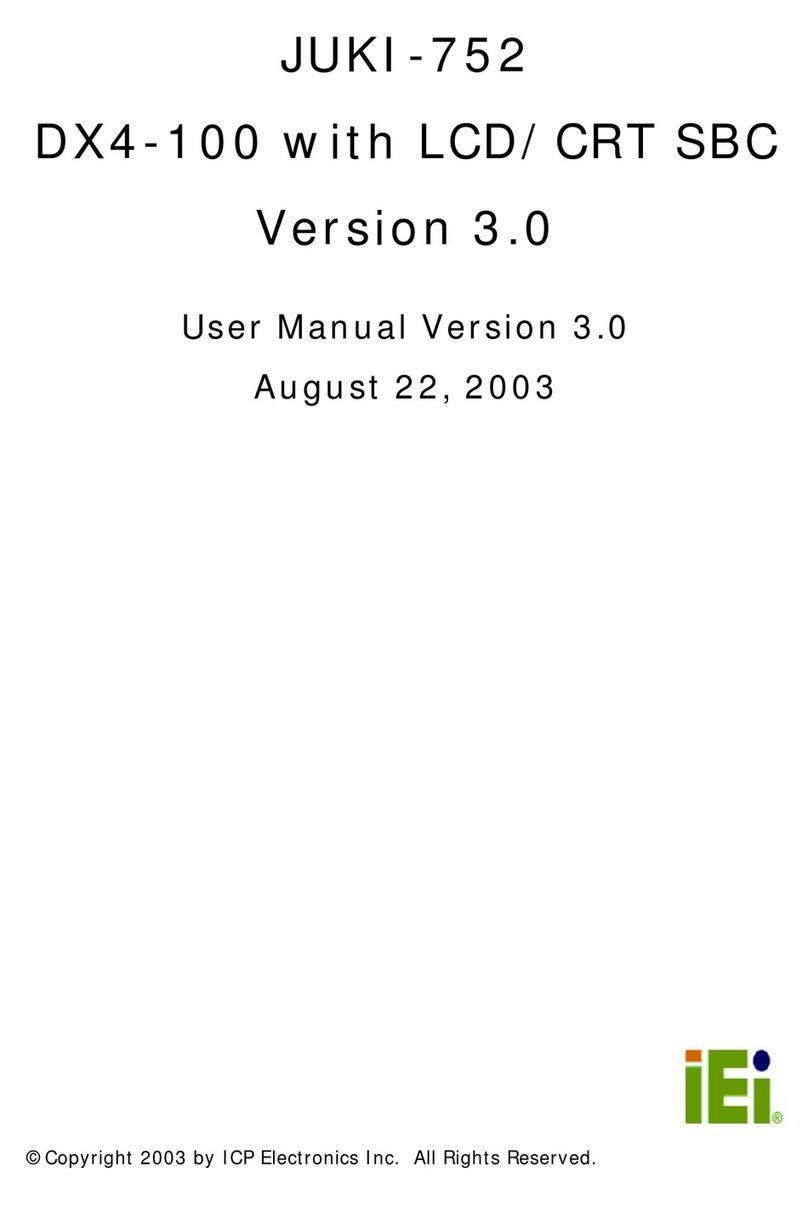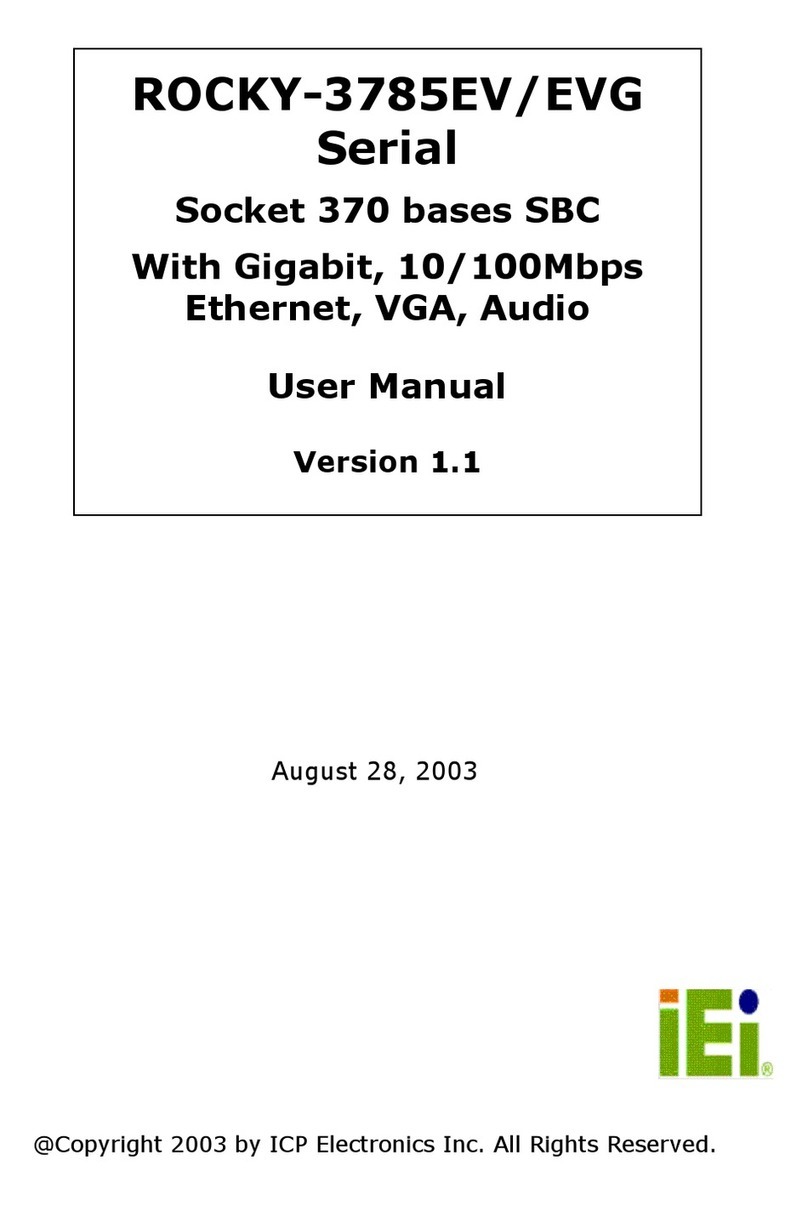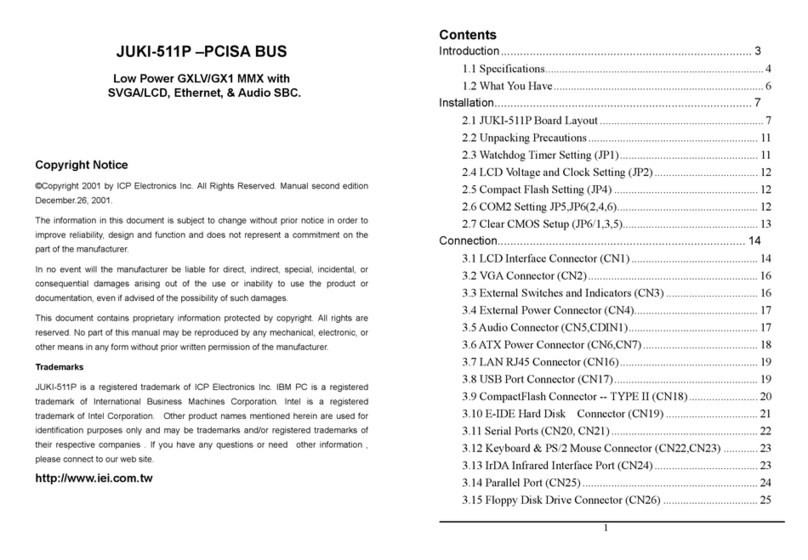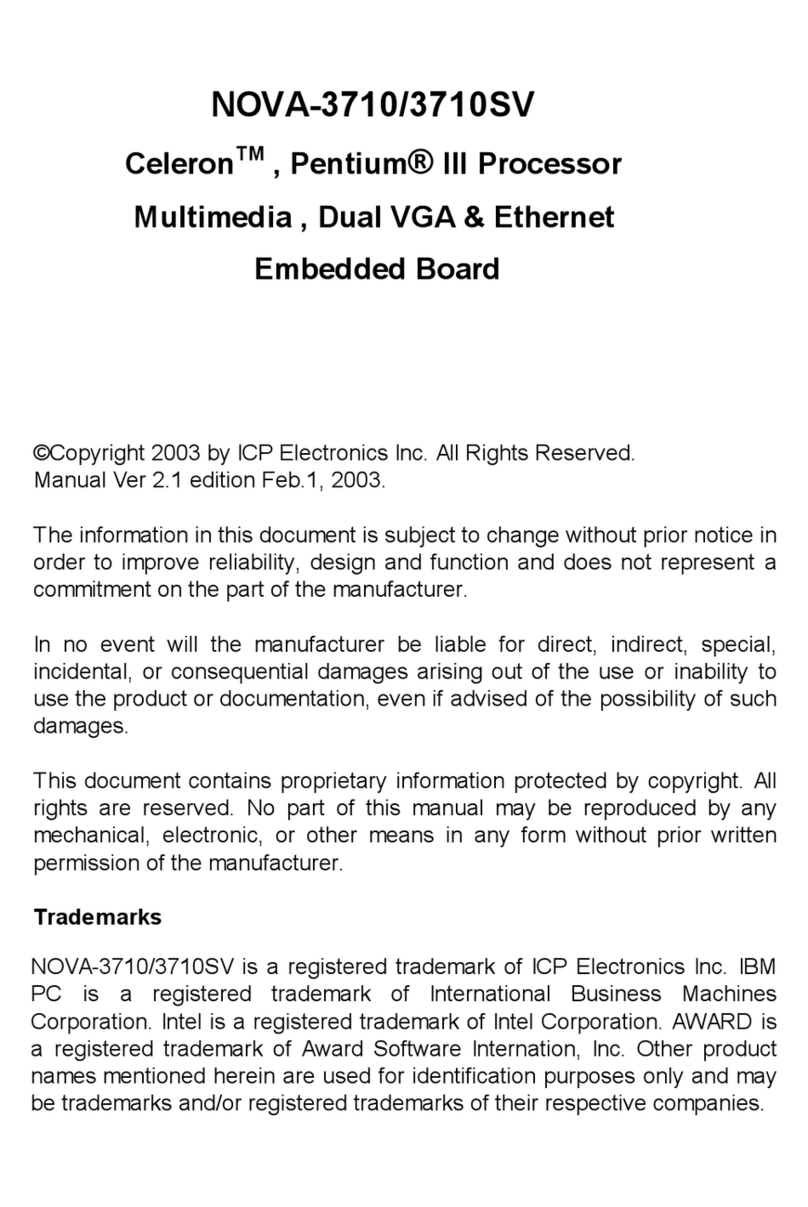
Table of Contents
CHAPTER 1 INTRODUCTION..................................................5
1.1 SPECIFICATIONS.......................................................................................6
1.2 PACKAGE OF CONTENTS ..........................................................................8
CHAPTER 2 INSTALLATION....................................................9
2.1 LAYOUT...................................................................................................9
2.2 DIMENSION DIAGRAM (UNIT: MM)........................................................11
2.3 UNPACKING PRECAUTIONS....................................................................12
2.4 CLEAR CMOS SETUP ............................................................................12
2.5 BUZZER FUNCTION SETTING..................................................................13
2.6 TFT LCD SETTING................................................................................13
2.7 COM2 RI FUNCTION SETTING ..............................................................13
2.8 COMPACT FLASH MASTER/SLAVE FUNCTION SETTING..........................14
CHAPTER 3 CONNECTION.....................................................15
3.1 AUDIO CONNECTORS .............................................................................15
3.2 IDE DISK DRIVE CONNECTOR...............................................................16
3.3 PARALLEL PORT ....................................................................................17
3.4 LVDS LCD INVERTER CONNECTOR .....................................................18
3.5 USB PORT CONNECTORS.......................................................................18
3.6 SERIAL PORTS........................................................................................19
3.7 KEYBOARD/MOUSE CONNECTOR...........................................................20
3.8 IRDA INFRARED INTERFACE PORT ........................................................21
3.9 FAN CONNECTOR...................................................................................21
3.10 VGA CONNECTOR.................................................................................22
3.11 DIGITAL I/O CONNECTOR......................................................................22
3.12 EXTERNAL SWITCHES AND INDICATORS ................................................23
3.13 PS-ON CONNECTOR..............................................................................23
3.14 LAN RJ45 CONNECTOR ........................................................................24
3.15 LVDS LCD CONNECTOR ......................................................................25
3.16 FLOPPY CONNECTOR .............................................................................26
3.17 COMPACT FLASH STORAGE CARD SOCKET............................................27
CHAPTER 4 AMI BIOS SETUP.............................................28
4.1 GETTING START.....................................................................................28
4.2 STARTING SETUP ...................................................................................28
3


